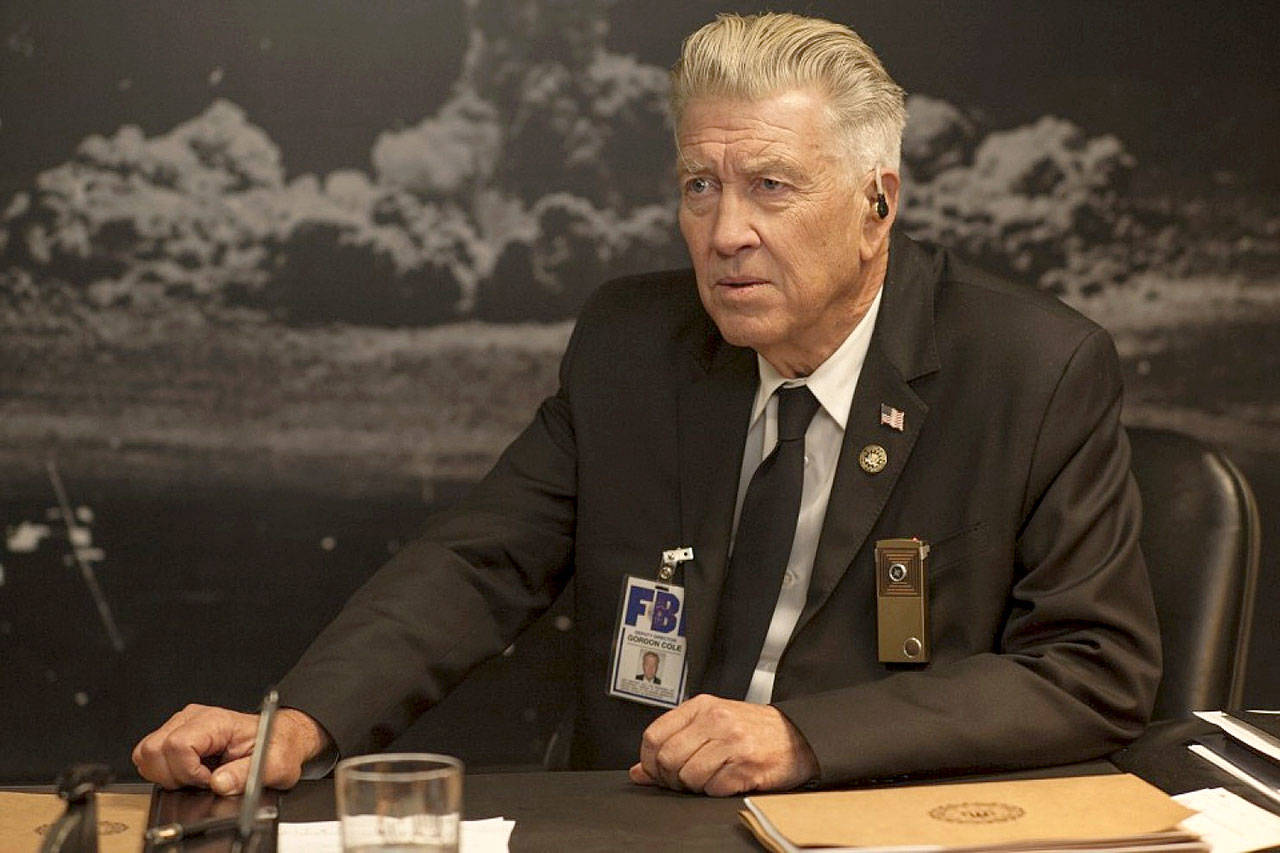(Warning: This review of “Twin Peaks” contains several details about what happens in the first four episodes.)
If you gave David Lynch free reign to do whatever he wants on the TV screen for 18 hours, you might understandably brace yourself for the result to be either brilliant or excessively self-indulgent and perhaps even willfully inscrutable.
So the very good news about Lynch and co-creator Mark Frost’s revival of their cult classic supernatural mystery series “Twin Peaks” (four hours of which premiered Sunday on Showtime), is that it’s certainly watchable, visually delightful, sufficiently disturbing yet periodically funny and — yes — in moments, it can be brilliant.
There’s plenty here for serious fans to devour as well as those who just want to admire it for an episode or two and see if they get the hoopla. This new “Twin Peaks” comes with a little of that same sense of possibility that accompanied the original series’ 1990 premiere, a memorable event that inspired both viewers and producers to look at their televisions in a whole new way.
The new series could never replicate that influence, but Lynch and Frost have clearly been paying attention to the medium’s progress in the last 2½ decades. The set-up in Sunday’s two-hour premiere (followed by an early, on-demand release of episodes 3 and 4 for Showtime subscribers) offered a refreshingly linear and even disciplined set of plot lines as “Twin Peaks” demonstrated what seemed to be an admiring knowledge of the seediness and patience of “Breaking Bad,” the elegant oddness of “Fargo,” and an upgraded “Mad Men”-style eye for vivid color palettes beyond the piney gloom of its original locale.
The obvious place to pick up the story had been there all along, part of the original schematic: In that red-draped, strobe-lit purgatory known as the Black Lodge, Laura Palmer (Sheryl Lee) had said to FBI Agent Dale Cooper (Kyle MacLachlan) that she would see him in 25 years.
And now here they both are — along with the Giant and the dancing dwarf and the One-Armed Man — growing old while suspended in time. “You can go now,” Laura tells Cooper. (But “go” how?)
Back in the Earthly dimension, the evil spirit formerly known as Bob is living a thug life as Cooper’s shaggy doppelganger, embroiled in a scheme in South Dakota that involves spousal betrayal and a gruesome murder. Meanwhile, in Twin Peaks, Washington, Margaret the Log Lady (Catherine E. Coulson, in a touching performance filmed before the actress’s death in 2015) relays some new cryptic messages from her log to Deputy Sheriff Tommy “Hawk” Hill (Michael Horse) about the long unsolved disappearance of Agent Cooper. Hawk has Deputy Andy Brennan (Harry Goaz) and office assistant Lucy Moran (Kimmy Robertson) bring up boxes of old files from the Laura Palmer murder that once preoccupied the town.
Meanwhile (the show is, of course, crammed full of meanwhiles), in a New York skyscraper, a college kid who has a strange, top-secret job monitoring cameras that are trained a large, empty, glass box is slaughtered, along with his girlfriend, when something monstrous materializes in the box and attacks them.
(Spoiler warning No. 2: The rest of this review contains plot details from episodes 3 and 4. Proceed with extreme caution.)
The new episodes are at their finest during Agent Cooper’s protracted escape attempt from the Black Lodge dimension, which involves a lot of detours and some of the trippiest TV we’ve seen in a while (including FX’s “Legion”), making maximum use of Lynch’s penchant for bizarre imagery, back-masked conversations and warpy noise. Lynch’s entire toolbox as a director and a visionary comes into play, and it all looks and sounds even better at the wider, 2017 high-def standard. Eventually Cooper emerges from an electrical socket in a suburban tract house in Las Vegas. Walking and talking like someone who has spent his last 25 years with a backwards-talking dwarf, Cooper has no idea who he is or where he is — or even how to speak.
MacLachlan clearly has a ball playing this man-who-fell-to-Earth version of the character, with some hilarious scenes in a casino and later, when he is returned “home” to the wife (Naomi Watts) and child who hardly recognize him. MacLachlan does an equally fine job with the evil embodiment of Cooper, who winds up in custody, triggering an alert to the FBI, including his old supervisor, Gordon Cole (played by Lynch) and fellow Agent Albert Rosenfeld (once again played by Miguel Ferrer, who died earlier this year). The agents rush to South Dakota to see if it’s really Cooper.
Cooper’s journey back to himself looks like it will take some time to sort out, perhaps lasting all 18 episodes — and “Twin Peaks” certainly behaves as if it has all the time in the world.
Lynch and Frost didn’t bring back “Twin Peaks” to merely please themselves or flaunt their oddities. They brought it back as a piece of pure Sunday-night entertainment, and that may be the most surprising thing about it.
Talk to us
> Give us your news tips.
> Send us a letter to the editor.
> More Herald contact information.

























